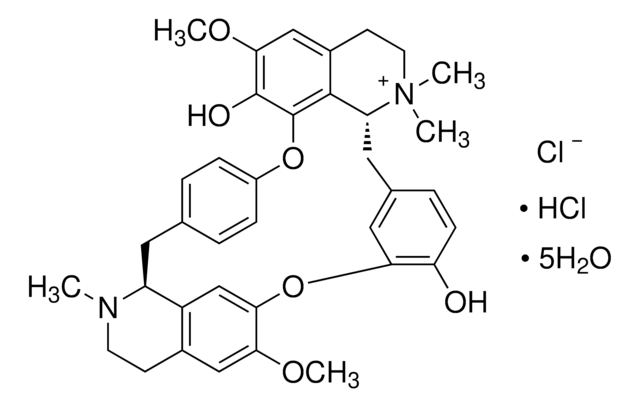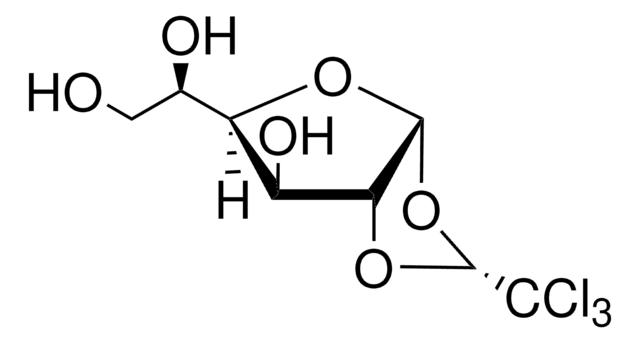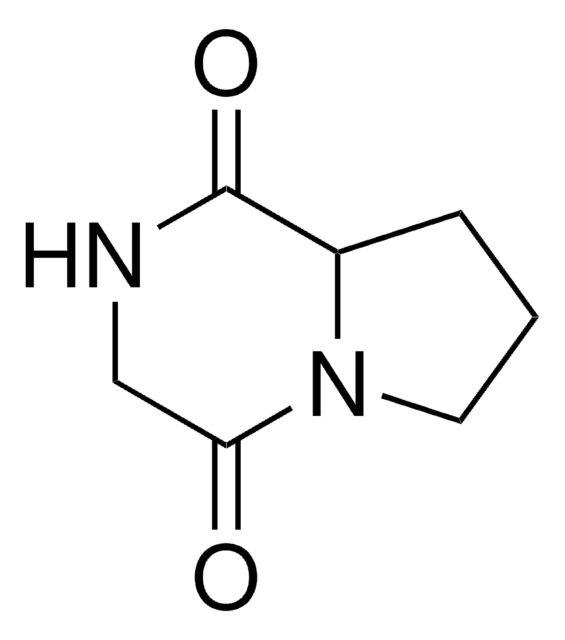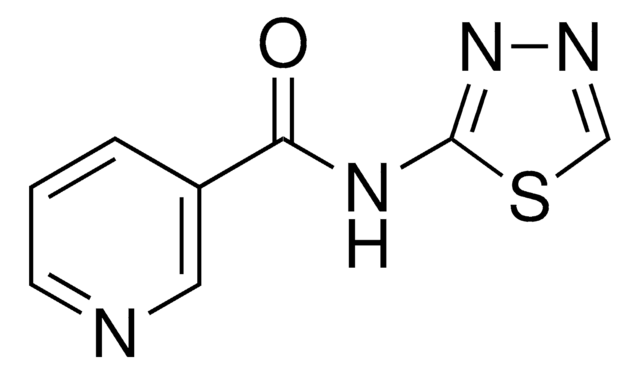C001
Acetylethylcholine mustard hydrochloride
>97% (GC), powder
Sinonimo/i:
Acetyl AF-64
About This Item
Prodotti consigliati
Livello qualitativo
Saggio
>97% (GC)
Forma fisica
powder
Condizioni di stoccaggio
desiccated
Colore
white
Punto di fusione
78-81 °C
Solubilità
H2O: >5 mg/mL
ethanol: soluble
methanol: soluble
Temperatura di conservazione
−20°C
Stringa SMILE
Cl[H].CCN(CCCl)CCOC(C)=O
InChI
1S/C8H16ClNO2.ClH/c1-3-10(5-4-9)6-7-12-8(2)11;/h3-7H2,1-2H3;1H
CHWPASAPXMNLKO-UHFFFAOYSA-N
Applicazioni
Azioni biochim/fisiol
Avvertenza
Avvertenze
Danger
Indicazioni di pericolo
Classi di pericolo
Acute Tox. 2 Dermal - Acute Tox. 2 Inhalation - Acute Tox. 2 Oral - Eye Irrit. 2 - Skin Irrit. 2 - STOT SE 1 - STOT SE 3
Organi bersaglio
Nervous system, Respiratory system
Codice della classe di stoccaggio
6.1A - Combustible acute toxic Cat. 1 and 2 / very toxic hazardous materials
Classe di pericolosità dell'acqua (WGK)
WGK 3
Punto d’infiammabilità (°F)
204.8 °F - closed cup
Punto d’infiammabilità (°C)
96 °C - closed cup
Certificati d'analisi (COA)
Cerca il Certificati d'analisi (COA) digitando il numero di lotto/batch corrispondente. I numeri di lotto o di batch sono stampati sull'etichetta dei prodotti dopo la parola ‘Lotto’ o ‘Batch’.
Possiedi già questo prodotto?
I documenti relativi ai prodotti acquistati recentemente sono disponibili nell’Archivio dei documenti.
Il team dei nostri ricercatori vanta grande esperienza in tutte le aree della ricerca quali Life Science, scienza dei materiali, sintesi chimica, cromatografia, discipline analitiche, ecc..
Contatta l'Assistenza Tecnica.









